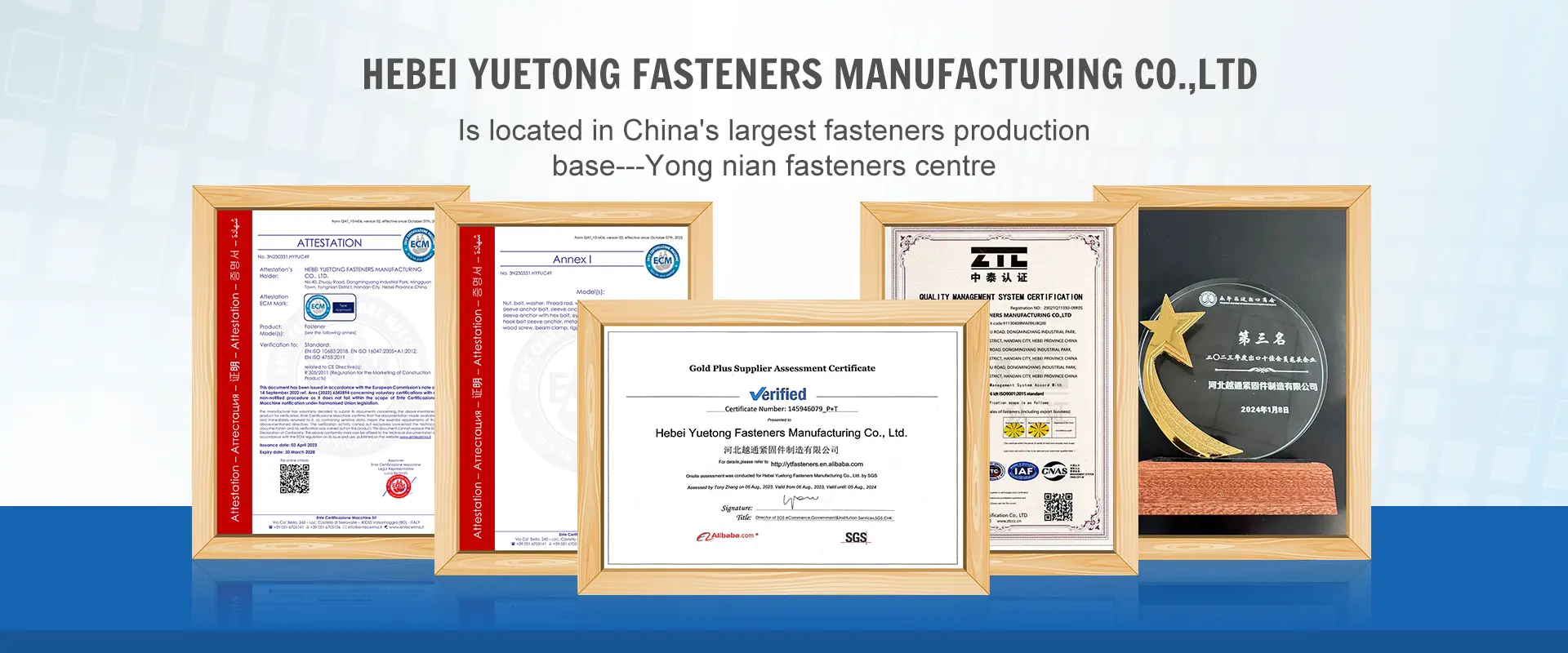Pro . 03, 2024 22:42 Back to list
Choosing the Right Wall Anchor Fasteners for Your Home Projects
Understanding Wall Anchor Fasteners A Comprehensive Guide
When it comes to home improvement and construction projects, choosing the right fasteners is crucial to ensure stability and safety. Among the various types of fasteners available, wall anchor fasteners stand out due to their versatility and reliability when securing items to walls. This article delves into the world of wall anchor fasteners, examining their types, applications, installation methods, and best practices to ensure effective use.
What is a Wall Anchor Fastener?
A wall anchor fastener is a device designed to hold objects securely to a wall, particularly in hollow walls where traditional screws may pull out easily. They are essential for hanging heavy items, such as shelves, cabinets, and artwork, especially in drywall construction. Wall anchors distribute the weight of the attached object across a larger area of the wall, thereby preventing damage and ensuring that items stay in place.
Types of Wall Anchor Fasteners
There are several types of wall anchor fasteners, each suited for specific applications
1. Plastic Expansion Anchors These are the most common type used for light to medium loads. They are inserted into a pre-drilled hole, and when a screw is driven into them, they expand against the wall, providing a secure hold.
2. Metal Expansion Anchors Similar to plastic anchors but made from metal, these anchors are designed for heavier loads. The metal expands against the wall as the screw is tightened, creating a strong grip.
3. Toggle Bolts Ideal for securing heavy items, toggle bolts consist of a machine screw and a spring-loaded toggle wing. When pushed through a hole, the wing opens up behind the wall, providing superior support.
4. Masonry Anchors Used specifically for concrete, brick, or block walls, these anchors are designed to provide a secure hold in solid materials. Examples include sleeve anchors and wedge anchors.
5. Self-Drilling Anchors Often used in drywall, these anchors can be installed without pre-drilling. The pointed tip allows them to penetrate the wall material easily, making them a convenient option for quick installations.
Applications of Wall Anchor Fasteners
Wall anchor fasteners are incredibly versatile and can be used in various applications, including
wall anchor fastener

- Hanging Shelves Wall anchors provide the necessary support for floating shelves, ensuring they can hold books, plants, and decorative items without sagging or falling.
- Mounting TVs For wall-mounted televisions, anchoring the bracket securely to the wall is vital. Toggle bolts or heavy-duty anchors are often recommended for this purpose.
- Installing Cabinets Kitchen or bathroom cabinets often require wall anchoring for stability. The right anchors ensure that cabinets remain securely in place over time.
- Securing Artwork and Mirrors Larger art pieces and mirrors can pose a risk if not anchored correctly. Using the appropriate anchors helps prevent accidents and damage.
Installation Tips
1. Choose the Right Anchor Consider the weight of the item you’re hanging and the type of wall material to select the appropriate anchor.
2. Use a Stud Finder If possible, locate wall studs to attach heavier items directly. If that’s not an option, use wall anchors suitable for the wall type.
3. Pre-Drill Holes For certain types of anchors, especially metal and toggle bolts, pre-drilling is necessary. Ensure that the hole is the correct size for the anchor being used.
4. Follow Manufacturer Instructions Always read the instructions that come with the wall anchors. They often provide specific guidelines for installation and weight limits.
5. Test the Hold After installation, test the hold by gently applying pressure to ensure that the anchor is secure and can handle the intended load.
Conclusion
Wall anchor fasteners are essential tools for anyone involved in home improvement or construction projects. By understanding the different types of anchors available, their applications, and proper installation techniques, you can ensure that your projects are safe and successful. Investing in quality wall anchors and taking the time to install them correctly will provide peace of mind and structural integrity for all your wall-mounted items. Whether you’re a DIY enthusiast or a professional contractor, mastering the use of wall anchor fasteners is a critical skill that enhances the quality and longevity of your work.
-
The Ubiquitous Reach of DIN934 in Application Realms
NewsMay.16,2025
-
Exploring Different Bolt Types
NewsMay.16,2025
-
Cracking the Code of Sleeve Anchor Mastery
NewsMay.16,2025
-
Clamp Design Principles,Types and Innovations
NewsMay.16,2025
-
Artistry Inspired by the Humble Anchor Bolt
NewsMay.16,2025
-
A Deep Dive into Screw Types
NewsMay.16,2025


